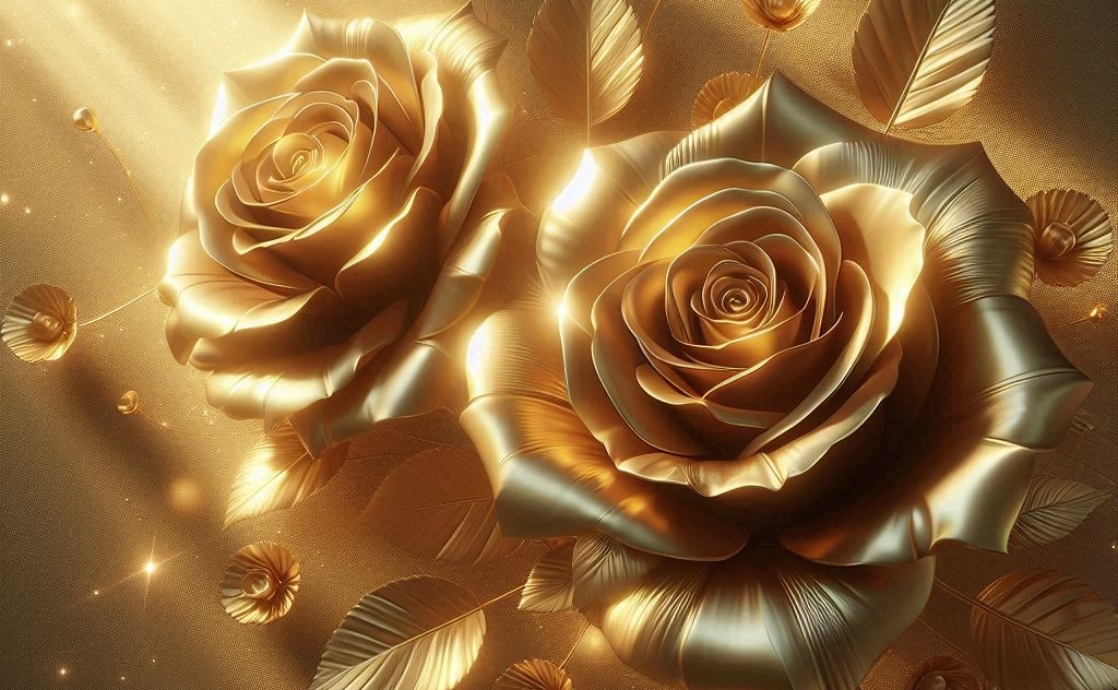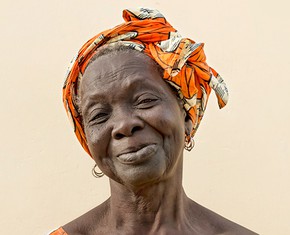The views expressed in our content reflect individual perspectives and do not represent the authoritative views of the Baha'i Faith.
Colors carry connotations. Whether it’s a lush green, signifying new life and abundance, or indigo representing it’s tumultuous history of slavery and wealth, we associate all kinds of emotions, stigmas, and significance with different colors.
The Spiritual Meaning and Significance of Gold in Africa
Gold has captivated human beings for as long as we’ve known about it. Its radiance so closely resembles the sun that ancient people used gold to worship. This was the beginning of a long relationship between the color gold and our ideas of divinity.

People in Kemet—the ancient African name for Egypt—believed gold had special, magic powers and would bury their dead with gold in order to protect the person in the afterlife. They were so taken by it’s yellowish warmth that they would only let specifically qualified citizens handle the processing of their gold.
RELATED: The Spiritual Significance of Roses
Gold symbolizes wealth and prosperity because of how expensive and rare it is, but it would be one-sided to say its symbolism ends there. It is not only used to signify royalty, majesty, but also divinity and honor. Many different kinds of temples and houses of worship all over the world are adorned with gold, as a sign of respect and reverence.
The Spiritual Meaning of the Color Gold in the Baha’i Writings
Gold obviously represents more than material wealth. The Baha’i writings talk about gold as a way to measure the purity of spiritual wealth, describing the color in a way that’s a lot less literal than the way it has been talked about historically. For Baha’is, the fiery purification of gold becomes a metaphor for achieving spiritual perfection:
The more difficulties one has in the world, the more perfect one becomes. The more you plow and dig the ground, the more fertile it becomes. The more you cut the branches of a tree, the higher and straighter it grows. The more you put gold into the fire, the purer it becomes. The more you sharpen the steel by grinding, the better it cuts. Therefore, the more sorrows one has the more perfect one becomes.
That is why at all times the prophets of God had tribulations and difficulties to withstand. The more often the captain of a ship is in a tempest and difficult the sailing, the greater his knowledge becomes. Therefore, I am happy that you have had many sorrows. Strange I am happy that you have had many sorrows. Strange it is that I love you and still I am happy that you have sorrows—Faith is the magnet that attracts divine confirmations.
Not until man is tried doth the pure gold distinctly separate from the dross. Torment is the fire of test wherein the pure gold shineth resplendently and the impurity is burned and blackened.
These Baha’i writings address gold in a way that’s much different than the current narrative surrounding the metal. They make a direct connection between tests and hardship, and the value of gold. This brings an entirely new dimension to the spiritual meaning of the color gold. It removes the material obsession with gold things, and replaces it with the drive to seek out spiritual perfection that is as pure as gold. Baha’u’llah, the prophet and founder of the Baha’i Faith, wrote:
O Son of Being! Busy not thyself with this world, for with fire We test the gold, and with gold We test Our servants.
O Son of Man! Thou dost wish for gold and I desire thy freedom from it. Thou thinkest thyself rich in its possession, and I recognize thy wealth in thy sanctity therefrom. By My life! This is My knowledge, and that is thy fancy; how can My way accord with thine?
Louis Gregory was one of the first black Baha’is. He was a prominent writer and shared the teachings of the Faith with other black people. He had a special place in Abdu’l-Baha’s heart, and descriptions of him often include mentions of gold. This, to me, would be one of the highest compliments:
That pure soul has a heart like unto transparent water. He is like unto pure gold. This is why he is acceptable in any market and is current in every country.
And after his passing in 1951, Shoghi Effendi, the Guardian of the Baha’i Faith, sent the following telegram:
Profoundly deplore grievous loss of dearly beloved, noble-minded, golden-hearted Louis Gregory ….
Gold is mentioned in the Baha’i writings in another capacity: to describe a coming age of world peace. Baha’is are tasked with building a new world on the foundation of spiritual principles like justice, truthfulness, and love. Once this happens, we are told, the world will experience the Most Great Justice, a Golden Age. The Universal House of Justice, the global governing body of the Baha’i Faith, wrote:
We can expect much cultural diversity in the long period before the emergence of a world commonwealth of nations in the Golden Age of Peace of Baha’u’llah’s new world order. Much wisdom and tolerance will be required, and much time must elapse until the advent of that great day.
At the present time, the challenge to every Baha’i community is to avoid suppression of those culturally-diverse elements which are not contrary to the teachings, while establishing and maintaining such a high degree of unity that others are attracted to the Cause of God.
Shoghi Effendi also wrote:
“These great oppressions,” He [Baha’u’llah], moreover, foreshadowing humanity’s golden age, has written, “are preparing it for the advent of the Most Great Justice.” This Most Great Justice is indeed the Justice upon which the structure of the Most Great Peace can alone, and must eventually, rest, while the Most Great Peace will, in turn, usher in that Most Great, that World Civilization which shall remain forever associated with Him Who beareth the Most Great Name.
These quotes describe the Golden Age as one where people from all different cultures will be unified. This makes me think of how gold never tarnishes or rusts, and how that should also be a quality of unity. True unity should withstand the test of exposure and time.
RELATED: Exploring the Meaning of Our 4 Spiritual Seasons
Gold has forever been the most sought-after and revered element. Its dazzling color has driven humanity to go to huge lengths in order to obtain and protect it. Historically, it’s one of the few material things that has been regarded with a spiritual reverence by different cultures since its discovery. The Baha’i writings take the acknowledgement of it’s spirituality to a new level, aligning it with ideals of perfection and unity.
Whether it’s a rich brown, signifying the fertility of the earth, or bright gold, representing the tests and hardships that have lead us to becoming more perfect people—colors carry connotations.
















Comments
Sign in or create an account
Continue with Googleor